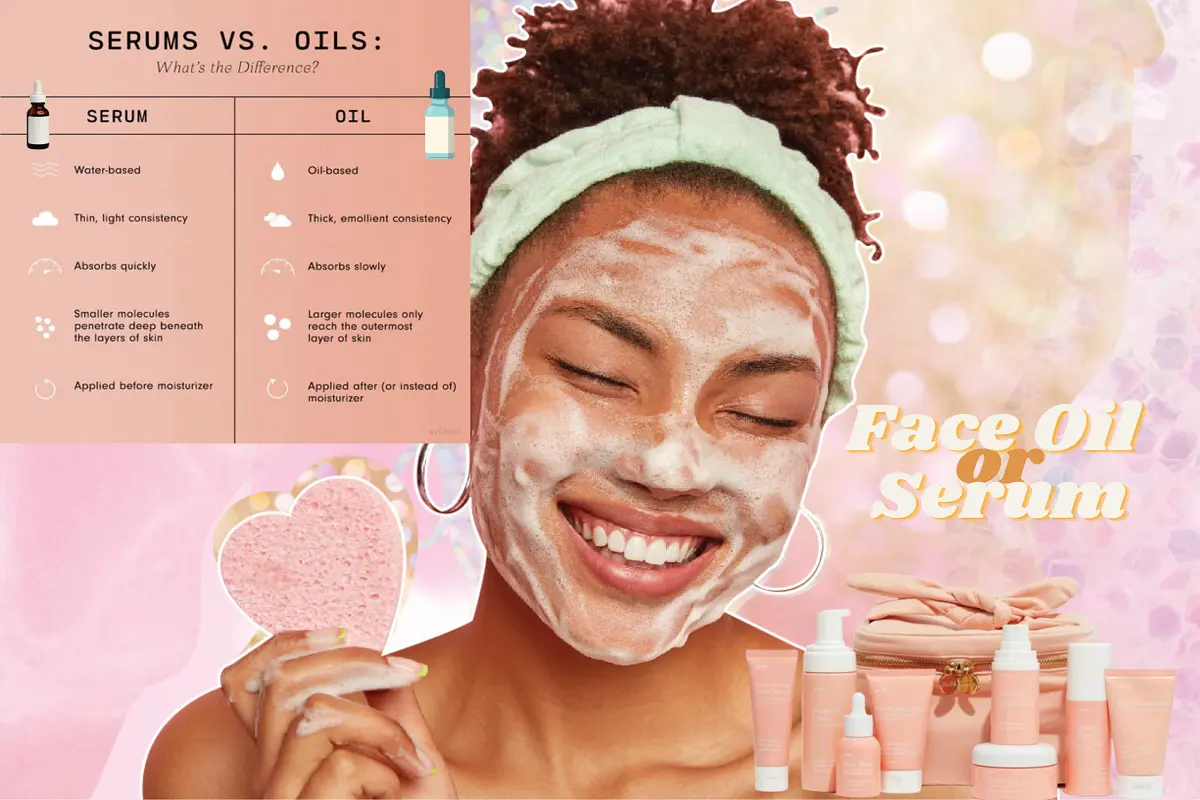
Our skin is just like our thoughts. We learn to understand and according to it, we shape our thoughts so that we can work for a better version. Skin is also like that, understanding our skin and understanding how skincare works empower you to make an informed purchase, select products suited to your skin type or condition you as an individual are facing and get the most out of them as part of your routine. While in our day-to-day skin care regime we should incorporate serum and face oil to get a healthy glow, sometimes we tend to forget the difference between the two.
So. Today we are bringing you a detailed analysis of how to use, what to use and when to use serum and Face oil. In this writing, we are exploring the difference between face oils and face serums, helping you to determine which you need and giving you expert advice on how to use them.
FACE OIL VS FACE SERUM
Let’s first start with serums. Serums tend to be concentrated and contain ingredients such as antioxidants and anti-inflammatories which affect the functions of the skin. Serums have a thin and watery consistency and are formulated with a high concentration of active ingredients allowing the product to penetrate deep below the surface of the skin. Face serums are intensive skin treatments to target skin concerns and boost your skin health. They offer concentrated amounts of key ingredients that deliver powerful results for specific skin care needs. While they are not created to replace your moisturiser, they can be very beneficial as a boost to your current skincare regime.
Just some of the things serum can do include:
Treats hyper-pigmentation
Repairs sun damage
Fights acne and future breakouts
Exfoliates away dead skin cells and speeds up cell turnover
Calms red, puffy skin
Reduces the appearance of pores and prevents them from being clogged
Brightens, smoothes and firms skin

Face Oils
Now, when it comes to face oils they are developed to protect the skin from changes in weather or temperatures whilst also keeping the moisture, repairing the skin’s barrier, keeping it supple and providing a source of antioxidants, fatty acids and vitamins.
Due to their emollient nature and thicker texture, oils need to be massaged to help deliver softness and smoothness to the skin. When used as the final step in your skincare routine, they protect the serum from evaporating from the skin These are powerful compounds that store moisture in the skin for long-lasting hydration. It is excellent in controlling the effects of dryness to give you balanced and dewy skin.
Do You Need To Use A Face Oil And A Serum?
This is a very simple question to be asked. But it can confuse many of us, some of us will say yes you should apply only serum, and some of us will be on the side of face oil. Many opinions but let’s dig deeper and find out more about it.
The answer depends on your skin type as to whether you need to use both a face oil and serum. If you have a particular skin concern then yes, we recommend using both products. This will ensure the specific problem is being addressed, while also receiving all of the benefits of face oil. Some serums also contain moisturising ingredients such as Hyaluronic Acid or Niacinamide Acid which may mean you do not necessarily need a face oil too, although it has been shown that dryer skin may benefit from sealing the hyaluronic acid into the skin with a face oil so that it doesn’t easily evaporate. Where Niacinamide helps to recover your uneven skin, and acne issues while keeping the skin’s original moisture intact.
Should Oily and Acne-Prone Skin Use Them?
The simple answer is a big YES. All skin types should apply both products. All skin types can benefit from adding serums and oils to their routine. For this you need to do research about your skin type, the issue your skin is facing, what ingredients suit your skin type and all. Because each serum is so unique, feel free to mix and match according to your specific skin’s needs.
For example, adding a Clarifying Serum and Brightening Serum to a problem skin routine can simultaneously clear up acne and fade the marks they leave behind. You may even opt for a boost of hyaluronic acid, like Moisture Maker, which will leave skin hydrated and moisturised.
Also Read: Vitamins & Minerals: A Guide to Achieve Your Dream Hair
When it comes to dry skin types, you will benefit from the extra moisture a facial oil provides, but oily and acne-prone skin can use facial oils, too. As long as your product is crafted with skin-friendly oils like jojoba and camellia, facial oils can help with problem complexions. All skin types produce oil, known as sebum, which helps keep skin moisturised. There are several reasons why skin may overproduce oil but supplementing your routine with non-pore clogging oils signals your glands to stop overproducing sebum, which ensures skin moisture is balanced and can prevent breakouts from occurring.
When to Apply Serums and Oils in Your Routine
We are moving forward to our ending and the main part of the writing when the right timing to apply serum and oils. Both serums and oils can be used morning and night and should be patted very gently onto the face, neck, and chest. While following the guidebook of applying skincare from thinnest to thickest, serums should be applied after cleansing and toning but before moisturising.
Facial oils can replace your moisturiser or, if you’re extra dry, can be layered above or beneath depending on personal preference. Regardless, allow both serums and oils to sink in for 2-3 minutes before moving on to your next skincare move.
(Note – During summer try to use face oils in the evening skincare routine.)
Here is the correct way to layer both facial serum and facial oil as part of your daily routine:
1: Cleanser
2: Toner
3: Facial Serum
4: Moisturiser
5: Facial Oil
To read more such news, download Bharat Express news apps



















